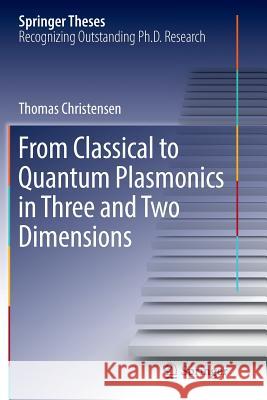From Classical to Quantum Plasmonics in Three and Two Dimensions » książka
topmenu
From Classical to Quantum Plasmonics in Three and Two Dimensions
ISBN-13: 9783319839738 / Angielski / Miękka / 2018 / 181 str.
Wydawca:
Springer
Seria wydawnicza:
Język:
Angielski
ISBN-13:
9783319839738
Rok wydania:
2018
Wydanie:
Softcover Repri
Ilość stron:
181
Waga:
0.29 kg
Wymiary:
23.39 x 15.6 x 1.09
Oprawa:
Miękka
Wolumenów:
01
Dodatkowe informacje:
Wydanie ilustrowane











